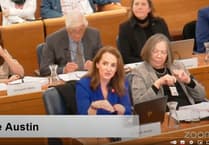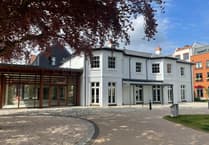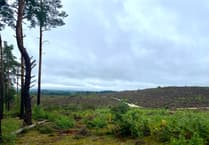WAVERLEY Borough Council unanimously refused a planning application at Old Park Stables in Old Park Lane last week. The application involved the provision of a two-storey building, and its use as an equestrian training centre and riding holiday accommodation. Applicant Jeremy Ricketts had proposed to convert the unlawfully constructed building - which comprises a terrace of four dwellings, known as 1-4 Cheltenham Cottages - into a linked block of accommodation. Conflicting with national strategic and local planning policy advice, the council heeded the "poor design" and "inappropriate" nature of the proposed development, as well as severe concerns for access along dilapidated Old Park Lane. Before opting to refuse the application, members heard from two speakers - one for the proposal and the other against. "I became familiar with the Old Park Stables area because access to the site, Old Park Lane, is a single-track lane with a weak surface," said Alan Bridgeman. "It is half a mile from Folly Hill, and the single- width track can't support the traffic. "The busier the stables becomes the worse the access becomes. The situation can only become worse," he said. But speaking for the scheme, Colin Meade, a partner at D and M Planning, Mr Ricketts' agents, claimed: "The application before you is no more than a version of details previously allowed on appeal in 1995. The building size and use is the same, and the deeds of all buildings were approved in 1995." Members of the western area development sub-committee also considered the site's extensive planning history, thanks to comprehensive documentation. Old Park Stables is sandwiched between Farnham town centre to the south and Hoghatch, Upper Hale, to the north, nestling in one of Farnham's more rural and "horsey" districts. Indeed, a number of riding establishments are located in the immediate vicinity, including Farnham Castle Stables and The Riding Centre. Yet Old Park Stables, situated within a section of land known as Knowle Farm, possesses an "extremely lengthy, complicated and contentious planning history," according to the officers' report. This stretches back to the 1960s, and includes many enforcement actions, appeals, and withdrawn applications tempered with several temporary and full planning applications - many of which have been granted on appeal. As part of the Old Park Brickworks, which ceased operations before 1960, permission was granted for the site to house a series of mobile homes and latterly be used as a depot for cattle transport lorries. The site was then tarnished by a series of unauthorised uses and enforcement actions, but in 1977, crucial permission was granted to convert buildings to stables and establish a riding school. In doing so, equestrian activities were established on a small section of the site. By the 1980s WBC had been deluged with applications to extend equestrian use at the site, with several permissions granted on a temporary basis, reflecting the council's concerns at the expansion of equestrian use. A decade later, the site was party to multiple uses, with several mobile homes stationed there. Old Park Stables offered a riding school, riding holidays, DIY, full liveries, as well as riding for the disabled and pony trekking. In the 1990s, in an attempt to secure the viability of the site and reduce traffic, the applicants proposed a number of changes to both buildings and facilities. Part of this application included the removal of mobile homes and the erection of four permanent buildings to accommodate staff and students of equestrian courses. Permission was refused, but granted on appeal in 1991, with the inspector claiming that the inclusion of a residential area would not generate activity or traffic movements along Old Park Lane. He also did not feel that the proposals were likely to cause such harm to the quiet rural character of the area. In 1994, planning permission was sought, and again granted on appeal for the training centre to be built, providing 17 bedrooms of various sizes, along with a common room, kitchen and bathroom facilities. Yet in the late 1990s, it was discovered that the building erected on the site of the residential training centre was actually a terrace of four dwellings, known as 1-4 Cheltenham Cottages. These have since been used for a multiplicity of residential purposes, including holiday lets and as longer-term rents on the private market for purposes unrelated to equestrianism. In May 2002, enforcement action began seeking removal of the houses, while a series of planning applications which sought planning permission for the dwellings were refused. In December 2003, Mr Ricketts made a further application to retain the building on the residential training site, with councillors rejecting the application following a brief discussion. Councillor Leonard Bate said: "This is probably the most complete report I have read. It is a complicated situation, and I have never read a report where an application has fallen at so many hurdles. "The plan does not accord with the site's projected use and the road problem is probably insurmountable, unless they invest a huge amount of money," he said.



